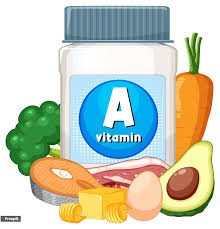Vitamin A is often underestimated, but it’s one of the most important nutrients for our health. It supports vision, strengthens immunity, and helps maintain glowing skin. Carrots and spinach usually come to mind first, but there are several other foods that quietly provide just as much—if not more—Vitamin A.
Many of these are traditional, time-tested foods that modern diets tend to ignore. Let’s uncover six underrated Vitamin A superfoods you should know about.
The Power of Amaranth Leaves
Amaranth leaves, also known as chaulai ke patte, are often overshadowed by spinach. But these vibrant greens are rich in Vitamin A, iron, and antioxidants. They help improve eyesight, boost immunity, and keep energy levels high.
Simple to prepare, amaranth leaves can be used in dals, curries, or lightly stir-fried. They’re an easy way to add more Vitamin A to everyday meals.
Cod Liver Oil – A Time-Tested Health Tonic
Cod liver oil has long been recognized as a natural immunity booster. It contains both Vitamin A and Vitamin D, making it an excellent choice for stronger bones, healthier vision, and better resistance to infections.
Though its flavor may not appeal to everyone, modern capsules make it much easier to consume regularly. Just a small serving is enough to meet daily Vitamin A needs.
Pumpkin Leaves – Nutrition That’s Often Ignored
Pumpkin is a common vegetable, but its leaves are often overlooked. Rich in Vitamin A, calcium, and iron, pumpkin leaves support eye health, radiant skin, and natural energy levels.
Used widely in African and Asian cuisines, they are delicious in stir-fries and stews. By including them in your meals, you can reduce waste while improving nutrition.
Amla – A Dual Source of Vital Nutrients
Amla, or Indian gooseberry, is famous for its Vitamin C, but it also contains Vitamin A. This combination protects against age-related vision decline, boosts skin health, and strengthens immunity.
Whether eaten raw, pickled, or consumed as juice or powder, amla is an easy way to enrich your daily diet with multiple essential nutrients.
Red Palm Oil – A Colorful Vitamin A Source
Red palm oil is instantly recognizable for its deep reddish-orange color, a sign of its high carotenoid content. The body converts these carotenoids into Vitamin A, supporting skin health, eye function, and overall wellness.
Though not common in most kitchens, using small amounts of red palm oil in salads or cooked vegetables can significantly increase your Vitamin A intake.
Moringa Leaves – The Miracle Tree Superfood
Often called the “miracle tree,” moringa is valued for its wide range of nutrients. Its leaves are especially rich in Vitamin A, along with protein, calcium, and iron.
Moringa leaves help strengthen bones, sharpen eyesight, and boost immunity. You can cook them fresh in curries or consume them as dried powder in smoothies and teas.
Why You Need More Vitamin A in Your Diet
Vitamin A deficiency can result in weakened immunity, poor vision, dry skin, and delayed growth. On the other hand, adding Vitamin A-rich foods to your meals can:
- Protect eyesight and prevent night blindness
- Strengthen the body’s defense against infections
- Improve skin health and glow
- Support growth and bone strength
Final Word
Carrots and spinach are not the only answers to Vitamin A deficiency. Amaranth leaves, cod liver oil, pumpkin leaves, amla, red palm oil, and moringa leaves are equally rich sources that often remain underappreciated.
By incorporating these foods into your diet, you’ll not only diversify your meals but also naturally protect your eyes, skin, and immunity. Sometimes, the most powerful superfoods are the ones we least expect.



